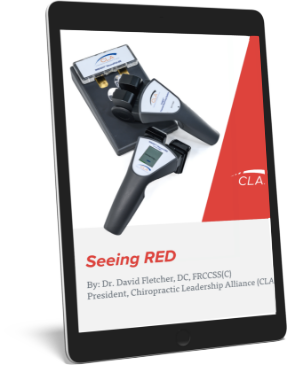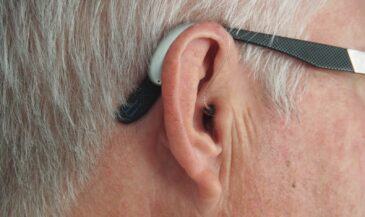By Dr. Christopher Kent
The Heart, the Brain, and the Autonomic
There is a twoway communication system between the brain and the heart. Analysis of the beattobeat patterns of the heart may be used to evaluate balance between the sympathetic and parasympathetic divisions of the autonomic nervous system. When the two branches of the autonomic system are working together at maximum efficiency, you feel “in sync.” This is because the sympathetic and parasympathetic divisions are not fighting one another. Such a condition is termed “entrainment.” [1]
Variability in heart rate reflects the vagal and sympathetic function of the autonomic nervous system, and has been used as a monitoring tool in clinical conditions characterized by altered autonomic nervous system function [2]. Spectral analysis of beattobeat variability is a simple, noninvasive technique to evaluate autonomic dysfunction [3].
Wellness
Normative data on heart rate variability have been collected [4,5,6]. This technology appears to hold promise for assessing overall fitness. Gallagher et al [7] compared agematched groups with different lifestyles. These were smokers, sedentary persons, and aerobically fit individuals. They found that smoking and a sedentary lifestyle reduces vagal tone, whereas enhanced bic fitness increases vagal tone. Dixon et al [8] reported that endurance training modifies heart rate control through neurocardiac mechanisms. In occupational health, the effects of various stresses of the work environment of heart patients and asymptomatic workers may be evaluated using heart rate variability analysis [9].
Chiropractic care
Zhang and Dean [10] reported the results of an exciting study involving 520 subjects in a singlevisit group, and 111 subjects in a fourweek group. The purpose of the study was to investigate the effect of chiropractic care in a multiclinic setting on the balance of the sympathetic and parasympathetic nervous system using HRV (heart rate variability) analysis. The study demonstrated consistent changes in HRV. The authors reported, “The decreased heart rate and increased total power from the HRV analysis indicated a healthy autonomic nervous system balance after correction of vertebral subluxation.”
Acquired dysautonomia is one of the three elements in the threedimensional model of vertebral subluxation [11]. Skin temperature changes, reflecting alterations in vasomotor tone, are used clinically to assess autonomic changes associated with vertebral subluxations. Heart rate variability represents an exciting, noninvasive technology to assess subluxationrelated autonomic function.
Proprietary instrumentation, developed by CLA, is designed to control for emotional arousals, which can contaminate HRV data collected using other systems. HRV capability may be added to the Insight instrumentation. It will empower the practicing chiropractor to assess and communicate the farreaching impact of subluxation correction and a healthy lifestyle.
References
1. Childre D: “One Minute Stress Management.” Planetary Publishers. Boulder Creek, CA. 1998.
2. DeDenedittis G, Cigada M, Bianchi A, et al: “Autonomic changes during hypnosis: a heart rate variability power spectrum analysis as a marker of sympathovagal balance.” Int J Clin Exp Hypn 1994;42(2):140.
3. Kautzner J, Camm AJ: “Clinical relevance of heart rate variability.” Clin Cardiol 1997;20(2):162.
4. O’Brien IA, O’Hare P, Corrall RJ: “Heart rate variability in healthy subjects: effect of age and the derivation of normal ranges for tests of autonomic function.” Br Heart J 1986;55(4):348.
5. Toyry J, Mantysaari M, Hartikainen J, Lansimies E: “Daytoday variability of cardiac autonomic regulation parameters in normal subjects.” Clin Physiol 1995;15(1):39.
6. Sato N, Miyake S, Akatsu J, Kumashiro M: “Power spectral analysis of heart rate variability in healthy young women during the normal menstrual cycle.” Psychosom Med 1995;57(4):331.
7. Gallagher D, Terenzi T, de Meersman R: “Heart rate variability in smokers, sedentary, and aerobically fit individuals.” Clin Auton Res 1992;2(6):383.
8. Dixon EM, Kamath MV, McCartney N, Fallen EL: “Neural regulation of heart rate variability in endurance athletes and sedentary controls.” Cardiovasc Res 1992;26(7):713.
9. KristalBoneh E, Raifel M, Froom P, Ribak J: “Heart rate variability in health and disease.” Scand J Work Environ Health 1995;21(2):85.
10. Zhang J, Dean D: “Effect of shortterm chiropractic care on pain and heart rate variability in a multisite clinical Study.” International Research and Philosophy Symposium: Abstracts. Sherman College of Straight Chiropractic. Spartanburg, SC. October 910, 2004.
11. Kent C: “A threedimensional model of vertebral subluxation.” The Chiropractic Journal 1998;12(9):38,50.






























































































































































